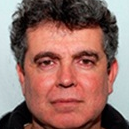Innovations in Water Research 2020
A special issue of Water (ISSN 2073-4441). This special issue belongs to the section "Wastewater Treatment and Reuse".
Deadline for manuscript submissions: closed (31 December 2020) | Viewed by 19848
Special Issue Editors
Interests: water and wastewater treatment; water and wastewater quality; water pollution monitoring; filtration; activated sludge
Special Issues, Collections and Topics in MDPI journals
Interests: energy efficiency; sustainable buildings, renewable energy sources; heating; HVAC; DHW; energy consumption
Special Issues, Collections and Topics in MDPI journals
Interests: water treatment; water used in energy production; renewable energy for application in hot domestic water and heating; activation of water by plasma technology; application of activated water
Special Issues, Collections and Topics in MDPI journals
Special Issue Information
Dear Colleagues,
This Special Issue of Water includes interesting scientific manuscripts exploring the following current research trends:
- Drinking water quality;
- Ground and surface water quality and pollution;
- Industrial and technological water quality;
- Wastewater treatment with physical, chemical and biological methods;
- Natural methods for water and wastewater treatment;
- Biotechnology of water;
- Single processes for the elimination of selected pollutants from water and wastewater;
- Integrated processes for the elimination of selected pollutants from water and wastewater.
This Special Issue of Water will help readers recognize the main water and wastewater problems from a scientific and technological point of view, as well as propose any innovative solutions. By knowing potential water hazards and the ways to solve them, readers may understand other opinions and perspectives, that would help in future research.
Prof. Dr. Iwona Skoczko
Prof. Dr. Dorota Anna Krawczyk
Prof. Dr. Antonio Rodero Serrano
Guest Editors
Manuscript Submission Information
Manuscripts should be submitted online at www.mdpi.com by registering and logging in to this website. Once you are registered, click here to go to the submission form. Manuscripts can be submitted until the deadline. All submissions that pass pre-check are peer-reviewed. Accepted papers will be published continuously in the journal (as soon as accepted) and will be listed together on the special issue website. Research articles, review articles as well as short communications are invited. For planned papers, a title and short abstract (about 100 words) can be sent to the Editorial Office for announcement on this website.
Submitted manuscripts should not have been published previously, nor be under consideration for publication elsewhere (except conference proceedings papers). All manuscripts are thoroughly refereed through a single-blind peer-review process. A guide for authors and other relevant information for submission of manuscripts is available on the Instructions for Authors page. Water is an international peer-reviewed open access semimonthly journal published by MDPI.
Please visit the Instructions for Authors page before submitting a manuscript. The Article Processing Charge (APC) for publication in this open access journal is 2600 CHF (Swiss Francs). Submitted papers should be well formatted and use good English. Authors may use MDPI's English editing service prior to publication or during author revisions.
Keywords
- water and wastewater treatment
- water and wastewater quality
- water pollution monitoring







